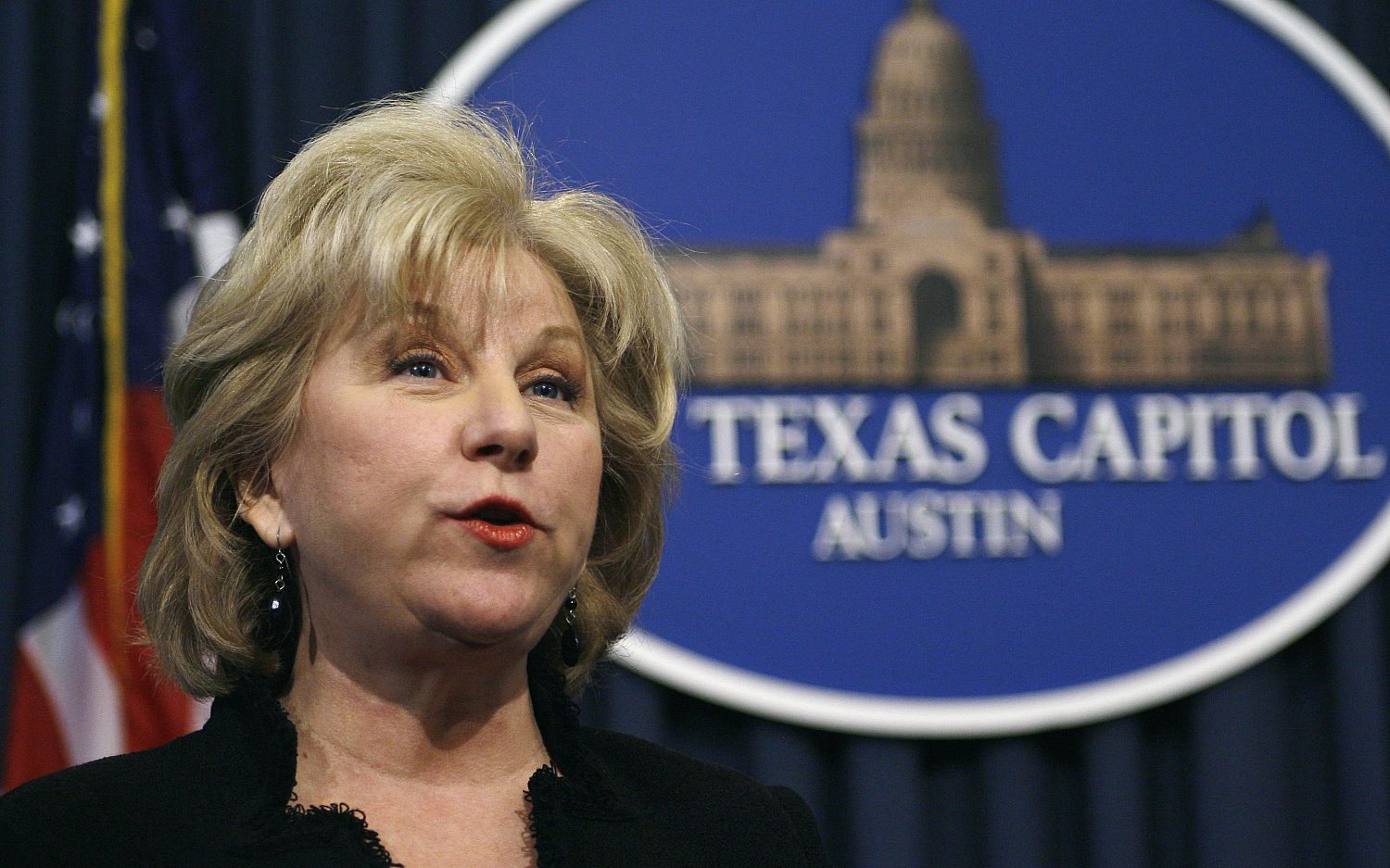Is Jesus being hijacked?
How Reza Aslan’s socio-political beliefs shape the way he re-invents the life and mission of Jesus Christ in <em>Zealot</em>
I’ve written several short columns (“Fawning over falsehood,” “Fawning over falsehood II: Zealot,” and “Press zealotry for Zealot”) critiquing Reza Aslan’s Zealot: The Life and Times of Jesus of Nazareth, which was a hot seller this summer, but since Amazon.com still lists the book as No. 1 in Books/Christian Books & Bibles/Theology/Christology, here’s a longer review by Peter Cassidy, a semi-retired English instructor who taught at Biola University. —Marvin Olasky
Reza Aslan and his latest book, Zealot: The Life and Times of Jesus of Nazareth (Random House, 2013), came to the attention of many when FoxNews.com interviewed him and the video went viral, with accusations of anti-Muslim bias on the part of Fox and charges of inflation of credentials by Aslan. As a result, the book shot up to first place in The New York Times bestseller list for non-fiction, although some have suggested it might fit better in the genre of fiction. In recent weeks, many Christian leaders and academics have expressed serious reservations about Aslan’s book.
Reza Aslan came to the United States with his parents after the revolution in Iran, and in high school he had what he considered to be a “genuine” conversion experience, after which he led his mother to the Lord and actively shared his experience with his friends. But in college he began to have doubts about alleged inconsistencies in the Bible and, somewhat influenced by his college professors, succumbed to doubt and eventually decided to embrace Islam. In his video “What do you believe?” Aslan said he preferred the “symbols and metaphors” of Islam. By this he meant he liked the Muslim “symbol” of a God of Oneness as opposed to the Christian belief in the Trinity. He describes his faith as very “rational and intellectual” and considers all religions as “man-made” and equally valid, simply speaking “different languages.” It would be a mistake to think of him as a strong Muslim; he is rather more of a syncretist regarding religion. But his real passion seems to be more in the area of Muslim progressive politics.
Aslan has some expertise in the study of social movements and did a doctoral thesis, viewable on Scribd, titled “Global Jihadism as a Transnational Social Movement,” looking at both radical and moderate Muslim groups as social movements rather than religious movements. He is also somewhat of an expert in “growing” social movements and has written about harnessing the power of social media and religious symbols to gain adherents to one’s cause. More about this later.
In addition to being a writer and instructor at the University of California, Riverside, Aslan is very active and influential in Muslim progressive politics, has traveled in the Middle East, and has been an advocate for social, religious, and political change. He also has a strong internet presence—his Aslan Media website being a “meeting place” to encounter progressive Muslim music, art, literature and politics.
Now, why this longish introduction in a book critique? It is my contention that Aslan’s socio-political beliefs, especially his views on harnessing social movements to potent religious symbols, profoundly shape the way he re-invents the life and mission of Jesus.
It was all politics
As Zealot opens, nearly the first third of the book is spent developing the idea that first-century Judaea was a place of apocalyptic and revolutionary fervor. Various reforming factions plotted and acted to overthrow the Roman occupiers. This period was the incipient stage for a faction that would later be called the Zealots, who were exceedingly dedicated and uncompromising in their opposition to Rome. Aslan depicts Jesus, when He was a young carpenter, as visiting these rebel strongholds and being converted to their cause. John the Baptist also mentored Him in this.
The main tenets of the Zealots were: 1) the total liberation of Israel/Palestine from the oppressor—in this case, Rome, and 2) the overthrow of the corrupt temple priests who were collaborators with Rome. This, according to Aslan, was Jesus’ whole mission—the overthrow of the Roman occupiers. This was the Kingdom of God—a Judea free of Rome. Jesus was, in Aslan’s gospel, wholly political, totally human, and only interested in the Jews. For this political cause, and for an “attack” on the Temple, Jesus was, summarily dispatched to be crucified for sedition and died as a “failed revolutionary.” Regarding Jesus’ disciples, Aslan claims that Paul was a self-ascribed apostle, not trusted by the others, and that his 14 epistles of the New Testament are to be disregarded in favor of James’ five chapters, because what Jesus really advocated was for all Christians to be under the Mosaic law. Lastly, Aslan claims that the disciples altered large portions of the New Testament to make Jesus less revolutionary. So, now Aslan is giving us the true picture.
I will try to abstain from un-scholarly-like apoplexy and will continue to do so.
As to Zealot’s substance, it contains at least five very serious errors, perhaps more. The first is that the author has little respect for the integrity of Scripture. The Lord has said, “All Scripture is breathed out by God and is profitable for teaching, for reproof, for correction, and for training in righteousness” (2 Timothy 3:16). In other words, all Scripture is God’s inspired Word—there aren’t “good parts” and altered parts. Yet Zealot repeatedly claims that the disciples were dishonest and altered the Scriptures at later dates. Further, because Aslan sees James as advocating the true way, a return to the Mosaic law, Zealot is willing to dispense with the whole 14 epistles of Paul! What more can be said to this reckless handling of the sacred Word.
The second major problem is claiming that Jesus was not divine. I think that Aslan’s own words defeat him on this point. In an online interview with Illume magazine, he said his conversion experience in his younger years was “real” and caused him to share Christ with his friends and parents. Here’s the point—a conversion could not be real without encountering Jesus as God. That’s what conversion is. So how is it possible to subsequently claim that Jesus isn’t God?
The third error is to present Jesus’ kingdom as earthly and political, not spiritual and inward. This contradicts the clear words of the New Testament: “My kingdom is not of this world.” (John 18:36) Also, “For the kingdom of God is not a matter of eating and drinking, but of righteousness and peace and joy in the Holy Spirit.” (Romans 14:17) As to inwardness, what about the thousands upon thousands of Christians who, for 2,000 years, have given testimony to the inward reality of God’s kingdom? As to being political, no one was more resolutely apolitical than Jesus. When the scribes presented him with the Roman coin to tempt him into taking sides, he stopped them completely with “… render to Caesar the things that are Caesar’s and to God the things that are God’s” (Matthew 22:21).
The fourth problem, in presenting Jesus’ death as strictly political, is that what is lacking in Jesus’ crucifixion is any reference to the sacrificial and redemptive aspect of His death. The truth, of course, is that He died for the sins of the world, and His death was the absolute defeat of all the powers of darkness, enabling mankind to be freed of bondage. And Scripture is clear. Both the religious (Matthew 26:57-68) and the political authorities (John 18:28-38) examined Jesus, resulting in Pilate declaring, “I find no fault in this man.” Thus, it is untrue that He had no trial; He died “under law” and “according to law.” (John 18:31) So, it was anything but a simple death for “treason.” It was a sacrificial death of infinite worth.
As to the fifth error—that the proper life for Christians is to be under the Mosaic law, the book of Galatians is quite clear that the law is fulfilled in Christ and that the new Testament principle is for mankind to be justified by faith rather than by works of the law. It’s not that Christians are not obedient, but that one’s works are a result of faith and not a source of justification before God. I think that this issue was fairly well settled during the Protestant Reformation.
Having completed our brief look at some of Zealot’s errors, I’d like to look at some troubling remarks from Aslan’s previous books and interviews that could call into question the integrity of Zealot’s depiction of Jesus.
Symbol of revolutionary zeal
Let’s first of all return to the passage where Jesus cleanses the Temple, or as Zealot has it, “attacks” the Temple. For after all, this scene is really the heart of the book and is really Zealot’s main argument for Jesus as a revolutionary, because it interprets Jesus’ righteous anger at those defiling the Temple as a fierce revolutionary zeal. And what did this “revolutionary” overthrow? Mainly some tables. Nevertheless, Zealot sees Jesus as a fiery reformer raiding the Temple as a provocation to the repressive, occupying Romans, and it is this “Jesus,” largely Zealot’s own creation, that is being presented to the readers as a “Jesus” they can be a “follower of without being a Christian.” But why does the author go to all the trouble to create this “Jesus” as a symbol of revolutionary zeal? A revolutionary needs a cause, right? Let’s look next at Aslan’s involvement in progressive Muslim politics.
The Middle East and the clerical monopoly
The author of Zealot doesn’t seem to be a radical Muslim, but quite the opposite, favoring a brand of Islam that is democratic, tolerant, and forward-looking. His political interests are in the greater Middle East stretching from Israel to Iran, and the interests of the Muslim diaspora in Europe and the United States. He speaks frequently on Muslim issues and hosts a website, Aslan Media, dealing with progressive Muslim interests and issues. He has spoken on Israel/Palestine, considering this land as a potent symbol for rallying disparate Muslim factions.
In addition to Aslan’s interest in Israeli-Palestinian conflicts, there is in another issue he feels strongly about that he discusses in his book No god but God. In a chapter called “Welcome to the Islamic Reformation,” he is against a kind of clerical monopoly on defining Islam by an old-guard coterie of scholars attached to century-old mosques and universities. He would like to see them displaced by a band of younger, educated, media-savvy Muslims, preferably non-clerical, who would also be able to interpret the Quran.
These are not unreasonable goals; they’re even admirable. But what concerns me is that there seems to be an eerie similarity between Aslan’s goals in the chapter “Islamic Reformation” and Jesus’ imputed goals in Zealot. In both cases the goals are: 1) political freedom for the greater Middle East, and 2) freedom from the domination of an entrenched and corrupt “priesthood.” It appears as if some universal typology or symbolism were being created. Further it presents Aslan’s cause as Jesus’ cause and vice versa.
Symbols can be manipulated
Zealot’s author is not only a leading figure in a political movement but is also somewhat of an expert on “how to grow a social movement,” having spoken on this issue at the Monterey Institute and in his book How to Win a Cosmic War (2011). Before discussing his ideas on social movements and symbols, let’s look at how he defines “symbols.” In speaking of his own faith in the video mentioned earlier, he said, “I became a Muslim because I was comfortable with the ‘symbols and metaphors’ of Islam.” He elaborated that he was more comfortable with the “symbol” of the God of Oneness as opposed to the Christian “symbol” of Trinity.
In Aslan’s view, whether we’re speaking of God, Christ, the Holy Spirit, a cross, a crescent, zeal, Mohammed, or Palestine—they’re all symbols. This is important. Now, as we return to quote and consider some of Aslan’s ideas on social movements and symbols (How to Win a Cosmic War), I’d like the reader to keep in mind the author’s depiction of Jesus in Matthew 21 as a symbol of revolutionary zeal:
“We have … seen how a social movement relies on the use of symbols to create solidarity among members across ethnic, cultural, linguistic and national boundaries. …”
So symbols unite diverse groups. Let’s continue:
“For such symbols to be effective they must be familiar enough to be recognized and easily absorbed by the movement’s members, yet new enough to arouse excitement and interest; they must reflect society’s values while also challenging them.”
So—familiar, but somehow new. And yet challenging to society. We continue:
“Religion, with its familiar yet infinitely malleable supply of symbols, provides a reservoir of ready-made symbols—words, phrases and images—that can be interpreted and reinterpreted as often and as innovatively as one likes to invest a movement’s message with meaning and significance.”
Thus, religion and its words and symbols are malleable—able to be manipulated. And what kind of “symbols” can be manipulated? GOD! CHRIST! What “words” can be reinterpreted “often” and “innovatively”—the Scriptures? And why? To invest a movement with meaning and significance.
Aslan also wrote:
“These symbols can be appropriated from traditional religious authorities and re-cast in such a way as to draw a sharp distinction between the old, outmoded arcane and apolitical posture of the church, temple or mosque and the new, innovative, populist position represented by the social movement.”
So symbols can be appropriated, that is stolen, hijacked for one’s own use. They can be recast, that is presented in a slightly different way, and can be used in a church or mosque to divide the old, nonpolitical members from the new political movement. All of this is done to increase interest and members in one’s movement.
At the end of Zealot, the author says that he wrote this book to show that “You don’t have to be a Christian to be a follower of Jesus.” In other words, you can keep your religion (Muslim or whatever) and still be something called a “follower of Jesus,” the political revolutionary. But can you be a follower of Jesus without being a Christian? Of course not. Because this “latest” Jesus is a lie. He’s a phantom created to sell books and gain “followers.” There aren’t two Jesuses—a “historical” one and a “heavenly” one. There’s only One—“Jesus Christ is the same yesterday and today and forever.”
Why not receive and follow the Real One?
An actual newsletter worth subscribing to instead of just a collection of links. —Adam
Sign up to receive The Sift email newsletter each weekday morning for the latest headlines from WORLD’s breaking news team.




Please wait while we load the latest comments...
Comments
Please register, subscribe, or log in to comment on this article.